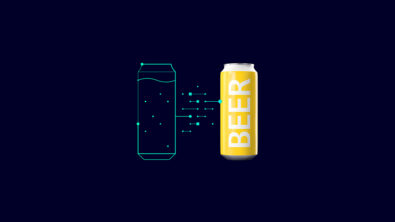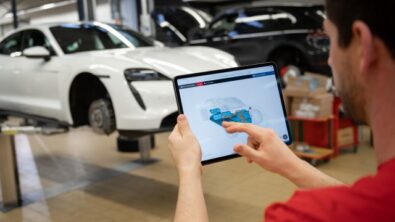The green IT deal

How logistics companies can get green more quickly
No degree further! Fridays For Future is back in the headlines with this demand – and tailwind. According to the global school strike movement, climate change is as acute a crisis as COVID-19. One thing is clear: The pressure to reduce CO2 emissions has grown significantly throughout the economy. By 2050, net emissions of greenhouse gases in Europe should be reduced to zero and our continent should become climate-neutral. That’s what the EU’s Green Deal wants to achieve. For logistics, this means the following: Supply chains need to be more environmentally friendly. IT plays a central role here.
Avoiding unnecessary traffic movements
Logistics that avoids unnecessary traffic movements and enables smart types of collaboration in global production and delivery processes can play a major part in protecting the world from harmful environmental influences. And, as a service provider for trade and industry, the logistics sector is increasingly being expected to do exactly this. Whether it’s a matter of the measurability of the ecological footprint or optimised transport networks, many shipping agents are already requiring environmentally friendly concepts from their logistics service providers – concepts that demonstrably reduce CO2 emissions. In addition, there is a requirement to save costs through the respectful use of resources at the same time.
Creating transparency
A prerequisite for this is the digital networking of the supply chain. This is because digitalisation enables the cross-company bundling and sharing of data and allows an as yet unknown level of transparency to be created throughout order and delivery processes. Better utilising transport capacities, optimally interconnecting modes of transport, using available personnel and financial resources efficiently, and automating workflows: This works unerringly if a supply chain of digitalised data and information is created.
Logistics is becoming greener almost of its own accord. This is because its main task of delivering goods in the right quantity, at the right time, in the right quality, and in the right place is a lot easier to achieve with the modern IT tools of the digitalised world. How the environment (but also logistics specialist) benefits from the digital networking of the supply chains:
- Information paths become shorter
Administratively, operationally, and strategically: The digitalisation of data and information makes it available across companies and on the move, for all stakeholders working together in the supply chain. Thanks to this single process perspective, the performance of the logistics network can be optimised and its resources can be used in the best way possible. Instead of arriving consecutively as happens in the analogue world, order information arrives together at the very same second. In this paper-free world, there is no need for multiple data entry, and sources of error are reduced. The ideal infrastructure for this is provided by cloud-based logistics platforms that make order-related processes available along with all required applications and supply chain management functions. - Transport capacities can be better utilised
Locations, orders, consignment quantities, relationships: The better the overview of the supply chain, the greater the degree of transparency. For example, the early availability of information enables the optimisation of capacity management with suppliers, the detection and tapping of consolidation and bundling opportunities, the better utilisation of transports, and the avoidance of empty runs. - Environmentally friendly modes of transport are easier to integrate
Ambitious climate targets can only be achieved by integrating environmentally friendly modes of transport. Goods that are moved in sections from the road to the waterways or to rail – e.g. via intermodal transport – significantly relieve the burden on the transport infrastructure and result in noticeably less CO2.Here, modern IT enables quick and easy access to environmentally friendly concepts, since all processes can be controlled digitally across all modes of transport from a central platform. - Additional transports are reduced
Additional transports also cause additional costs and CO2 emissions. Usually, both of these can be avoided if order-related data and information from all involved parties – from production to logistics – flows into the same IT platform and decisions can be made promptly from a perspective encompassing the entire process (key term: end-to-end visibility).
Naturally, we can never do enough for our environment. However, thanks to modern IT and the comprehensive digitalisation of processes, logistics is already more environmentally friendly than many other industries on our planet.


